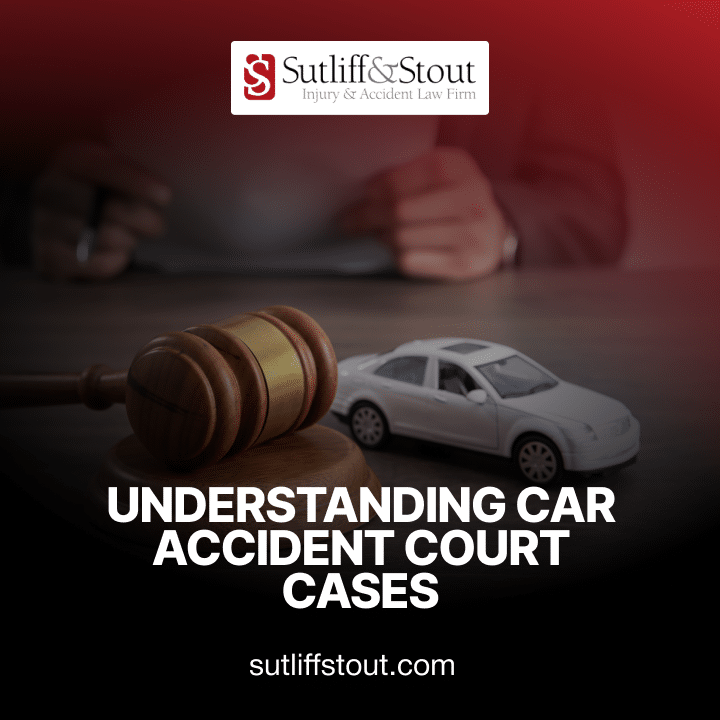Understanding the timeline of a personal injury lawsuit is essential, as it ensures that legal actions commence within the statutory time limits, safeguarding the rights of injured parties to pursue compensation. Furthermore, familiarity with this timeline empowers individuals with knowledge of what to anticipate throughout the personal injury case, including the typical duration of the process.
Generally, the duration of a personal injury case varies depending on the unique circumstances surrounding each individual’s situation. However, a general overview of the legal process typically encompasses several key stages.
These stages include the pre-litigation phase, during which initial investigations and assessments are conducted, followed by the filing of the lawsuit, the discovery phase, which involves the exchange of information between parties, and trial preparation, wherein both sides prepare their respective cases for trial.
Additionally, the timeline also consists of pre-trial motions, settlement negotiations aimed at resolving the dispute outside of court, trial preparation to ensure readiness for courtroom proceedings, the trial itself, where arguments are presented and evidence is evaluated, and finally, post-trial motions and potential appeals, which may occur following the verdict.
Understanding this comprehensive timeline is vital for individuals navigating the complexities of a personal injury lawsuit.

Pre-Litigation Phase
The first stage of a personal injury lawsuit involves an initial consultation with a personal injury attorney to determine if the individual has a viable case. This happens before any formal legal action starts.
During this time, the lawyer looks into the case by gathering evidence, like pictures of the accident, any damage to property, or medical records from treatment. This step is also when people involved might try to settle things without going to court by talking with insurance companies to reach a fair agreement.
Filing the Lawsuit
If negotiations with the insurance company prove unsuccessful, the personal injury attorney will proceed to initiate a lawsuit on behalf of the individual. After the filing of the lawsuit, the matter remains open to settlement negotiations until the point at which it is scheduled for trial before a judge and jury.
The drafting and submission of a formal complaint constitute a crucial step within the litigation process. The complaint serves to delineate the parties involved, articulate the factual underpinnings and legal rationale supporting the case, and specify the relief sought by the plaintiff.
Following the filing of the complaint with the court, the defendant must be served with a copy thereof, and the methods of service are subject to jurisdictional variations.
Consequently, the defendant is afforded a prescribed period, typically 30 days, within which to create a response and file an answer to the complaint. In their response, the defendant may elect to admit or deny the allegations outlined in the complaint and have defenses contending their exemption from liability or obligation to provide compensation for the alleged personal injury.
The Discovery Phase
The next phase in the legal process is the discovery phase, which constitutes the period dedicated to the procurement of evidence. This process encompasses the exchange of information and documentation, as well as the solicitation of non-publicly available or readily accessible information from the opposing party.
An elemental facet of the discovery process involves the deposition of parties and witnesses, whereby either party or a potential witness is sworn under oath and subjected to questioning.
It is during the discovery phase that expert witnesses typically become involved in the case. These individuals offer specialized knowledge to facilitate the understanding of pertinent issues by the judge and jury. Moreover, expert witnesses may offer informed opinions on the matters central to the case.
Pre-Trial Motions
Filing pre-trial motions plays a vital role in shaping a personal injury lawsuit. The outcome of such motions can be characterized as either dispositive or non-dispositive.
Dispositive rulings have the potential to terminate the litigation and resolve the dispute before trial, while non-dispositive rulings pertain to incidental questions arising during litigation.
Dispositive motions commonly include motions to dismiss and summary judgments. A motion to dismiss may be submitted in the early stages of litigation, often before discovery, and seeks dismissal of the case based on various legal grounds, such as lack of subject matter jurisdiction or failure to state a claim.
Conversely, a summary judgment, often likened to a “blunt instrument,” allows the court to decide a case when there are no genuine disputes of material fact and the law favors one party.
Preparation is crucial in a personal injury lawsuit. This encompasses the establishment of a comprehensive timeline outlining all deadlines for document submission, pre-trial motions, and witness interviews.
Additionally, meticulous evidence gathering is important to construct a compelling case, and utilizing an organized digital document management system can enhance accessibility to critical information during trial preparation.
Moreover, timely scheduling of the trial date, even if pre-trial steps are ongoing, is essential. Finally, maintaining flexibility in scheduling is also crucial, as unforeseen developments or court delays may require adjustments to the plan.
Settlement Negotiations
Negotiations in a personal injury settlement require a collaborative effort by both parties to resolve the claim through a series of settlement offers and counteroffers. Alternative dispute resolution (ADR) serves as a mechanism to resolve personal injury lawsuits outside of court, with common forms including mediation and arbitration.
In mediation, which may be mandatory or voluntary, the involved parties convene with a mediator to facilitate the resolution of the dispute. The mediator, often possessing expertise in the legal field, such as a seasoned attorney or retired judge, assumes the role of a neutral facilitator tasked with fostering dialogue to assist the parties in reaching a mutually agreeable solution.
Meanwhile, arbitration is a more structured process compared to mediation, resembling a simplified version of a trial. It happens when both parties present their respective cases, furnish evidence, and call upon witnesses for testimony.
Due to the unique nature of each personal injury accident case, settlement offers are also distinct. Factors such as the degree of negligence, the extent of damages, the proposed settlement amount, and the financial capability of the defendant are among the considerations individuals should weigh when assessing a settlement offer in a personal injury case.
Trial Preparation
Trial preparation in a personal injury lawsuit consists of various components, including the finalization of trial exhibits and the selection of witnesses. This phase entails the meticulous curation and organization of exhibits, such as documentation and medical records, alongside the preparation of testimony to substantiate the claims and effectively illustrate the individual’s case.
Additionally, constructing opening and closing statements constitutes a significant aspect of trial preparation, serving to shape the narrative of the case and capture the attention of the jury.
Meanwhile, jury selection also holds importance in the context of a personal injury lawsuit, as the jury is tasked with determining the validity of the individual’s personal injury claim. Thus, the process of jury selection plays a pivotal role in influencing the dynamics of the trial and, ultimately, the outcome of the case.
Trial
The trial phase of a personal injury lawsuit typically extends over approximately one month. Throughout the trial proceedings, the presentation of evidence by both parties must be compelling and engaging and effectively support the individual’s case.
Furthermore, the trial encompasses the examination and cross-examination of witnesses, serving to demonstrate the actions of the party allegedly at fault for breaching their duty of care.
Lastly, the trial has a closing argument, providing the attorney with an opportunity to summarize the key points of the case and reaffirm their position while advocating why the jury should render a favorable verdict.
Post-Trial Motions and Appeals
Following a verdict by the court, the conclusion of the case is not necessarily assured. After the trial, both parties still have the opportunity to appeal, alleging errors in the trial process and petitioning a higher court to reconsider the verdict. Should a party contend that procedural rules were not adhered to or that the judge rendered a flawed decision, they may initiate the appeals process.
Typically, the plaintiff’s attorney is responsible for filing a notice of appeal within 30 days of the court’s initial ruling. Upon filing the notice of appeal, the appellant or plaintiff is required to obtain a transcript of the court proceedings.
Meanwhile, in the event of a favorable outcome for the plaintiff at trial, measures must be taken to enforce the judgment and secure any awarded damages from the defendant. Upon the exhaustion of all legal avenues and the satisfaction of any monetary awards, the case is formally concluded.
Hiring A Lawyer After A Personal Injury
A comprehensive understanding of the personal injury lawsuit timeline, combined with adept legal representation to navigate the procedural journey, enables individuals to pursue fair compensation for their injuries.
Understanding the timeline affords individuals the ability to anticipate and effectively manage the duration and intricacies of the legal process, facilitating planning and alignment of expectations.
Furthermore, it enables individuals to stay knowledgeable of the deadlines, gather essential evidence, and adhere to requisite legal protocols. While this process may pose challenges for many, the expertise of seasoned attorneys empowers claimants to secure just compensation for their injuries.
Call An Experienced Personal Injury Attorney Now
Seeking assistance from a top-rated personal injury attorney could significantly impact your ability to secure the maximum compensation for your losses and ensure accountability for the negligent actions of the responsible party.
At Sutliff & Stout, our dedicated legal team is committed to helping you fight for justice. We understand the urgency of your situation, which is why we promptly file your claim to expedite the process of obtaining the financial compensation you deserve.
Take the first step towards recovery by reaching out to us today. Call us at (713) 987-7111 for a free consultation, or send us a message through our secure online form.
- What is a Catastrophic Injury? - January 30, 2025
- Essential Guide for Pedestrians Hit by Cars in Texas - January 30, 2025
- How to File a Wrongful Death Lawsuit in Texas - January 15, 2025








 (713) 405-1263
(713) 405-1263  550 Post Oak Blvd, Suite 530
550 Post Oak Blvd, Suite 530